Contralateral Islanded Facial Artery Myomucosal Flap for the Reconstruction of Floor of the Mouth Defect
Abstract
:Surgical Technique
Discussion
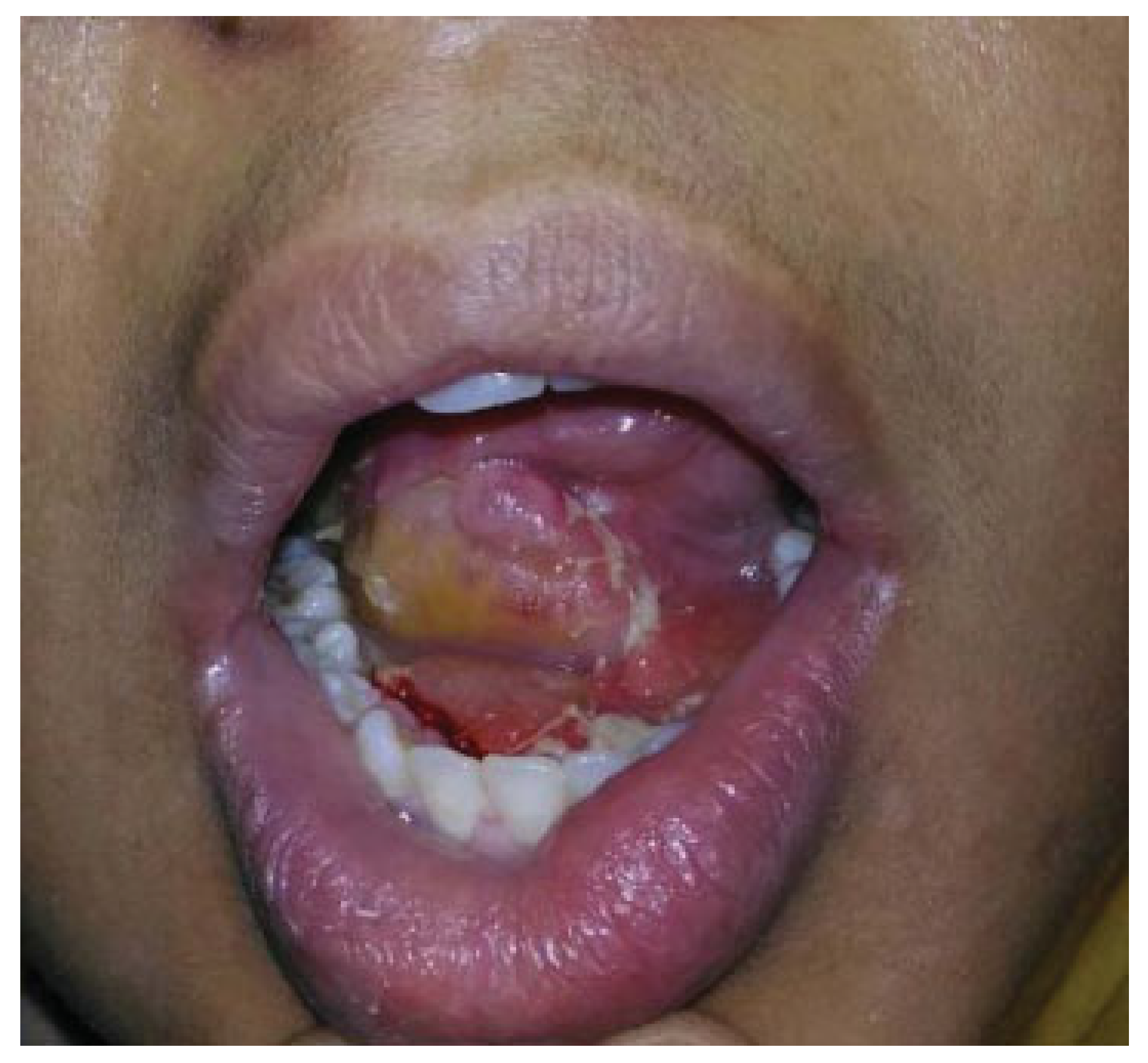

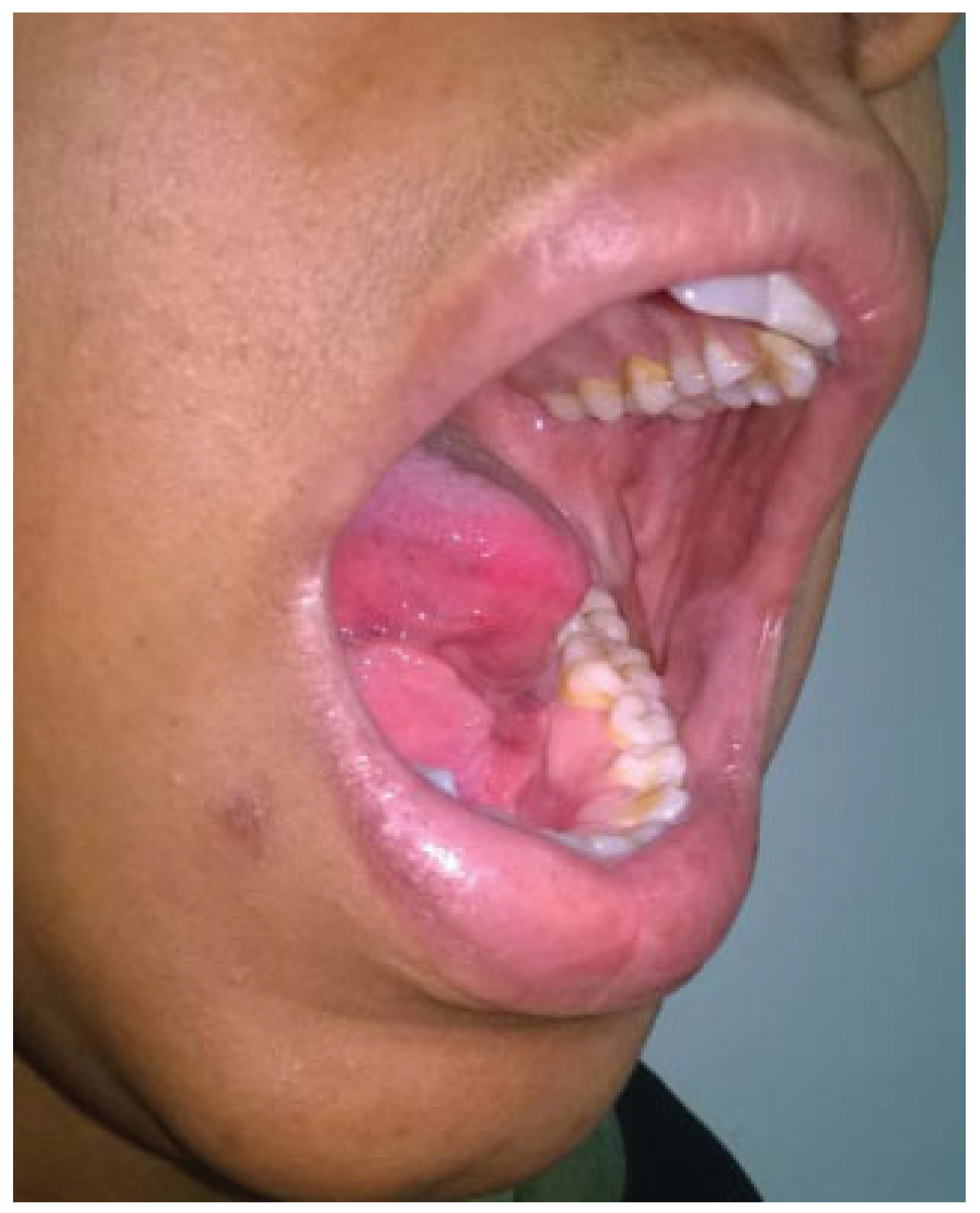
Funding
Conflicts of Interest
Ethical Clearance
Informed Patient Consent
References
- Pribaz, J.; Stephens, W.; Crespo, L.; Gifford, G. A new intraoral flap: Facial artery musculomucosal (FAMM) flap. Plast Reconstr Surg 1992, 90, 421–429. [Google Scholar] [CrossRef] [PubMed]
- Hofer, S.O.; Posch, N.A.; Smit, X. The facial artery perforator flap for reconstruction of perioral defects. Plast Reconstr Surg 2005, 115, 996–1003, discussion 1004–1005. [Google Scholar] [CrossRef] [PubMed]
- Zhao, Z.; Li, S.; Yan, Y.; et al. New buccinator myomucosal island flap: Anatomic study and clinical application. Plast Reconstr Surg 1999, 104, 55–64. [Google Scholar] [CrossRef]
- Massarelli, O.; Gobbi, R.; Raho, M.T.; Tullio, A. Three-dimensional primary reconstruction of anterior mouth floor and ventral tongue using the ‘trilobed’ buccinator myomucosal island flap. Int J Oral Maxillofac Surg 2008, 37, 917–922. [Google Scholar] [CrossRef] [PubMed]
- Joseph, S.T.; Naveen, B.S.; Mohan, T.M. Islanded facial artery musculomucosal flap for tongue reconstruction. Int J Oral Maxillofac Surg 2017, 46, 453–455. [Google Scholar] [CrossRef] [PubMed]
- Rahpeyma, A.; Khajehahmadi, S.; Rezvani, H.N. Pedicle length in the inferiorly based buccinator myomucosal island flap: A cadaveric study. Int J Oral Maxillofac Surg 2014, 43, 173–176. [Google Scholar] [CrossRef] [PubMed]
- Khan, K.; Hinckley, V.; Cassell, O.; Silva, P.; Winter, S.; Potter, M. A novel use of the facial artery based buccinator musculo-mucosal island flap for reconstruction of the oropharynx. J Plast Reconstr Aesthet Surg 2013, 66, 1365–1368. [Google Scholar] [CrossRef] [PubMed]
- Massarelli, O.; Gobbi, R.; Soma, D.; Tullio, A. The folded tunnelizedfacial artery myomucosal island flap: A new technique for total soft palate reconstruction. J Oral Maxillofac Surg 2013, 71, 192–198. [Google Scholar] [CrossRef] [PubMed]
- Dupoirieux, L.; Plane, L.; Gard, C.; Penneau, M. Anatomical basis and results of the facial artery musculomucosal flap for oral reconstruction. Br J Oral Maxillofac Surg 1999, 37, 25–28. [Google Scholar] [CrossRef]
- Ferrari, S.; Ferri, A.; Bianchi, B.; Varazzani, A.; Giovacchini, F.; Sesenna, E. Oncologic safety of facial artery myomucosal flaps in oral cavity reconstruction. Head Neck 2016, 38 (Suppl. S1), E1200–E1202. [Google Scholar] [CrossRef] [PubMed]
- Hagan, W.E.; Walker, L.B. The nasolabial musculocutaneous flap: Clinical and anatomical correlations. Laryngoscope 1988, 98, 341–346. [Google Scholar] [CrossRef]
- Wang, H.S.; Shen, J.W. Preliminary report on a new approach to the reconstruction of the tongue. Acta Aca Med Prim Hanghai 1980, 7, 256–259. [Google Scholar]
- Richardson, D.; Fisher, S.E.; Vaughan, E.D.; Brown, J.S. Radial forearm flap donor-site complications and morbidity: A prospective study. Plast Reconstr Surg 1997, 99, 109–115. [Google Scholar] [CrossRef]
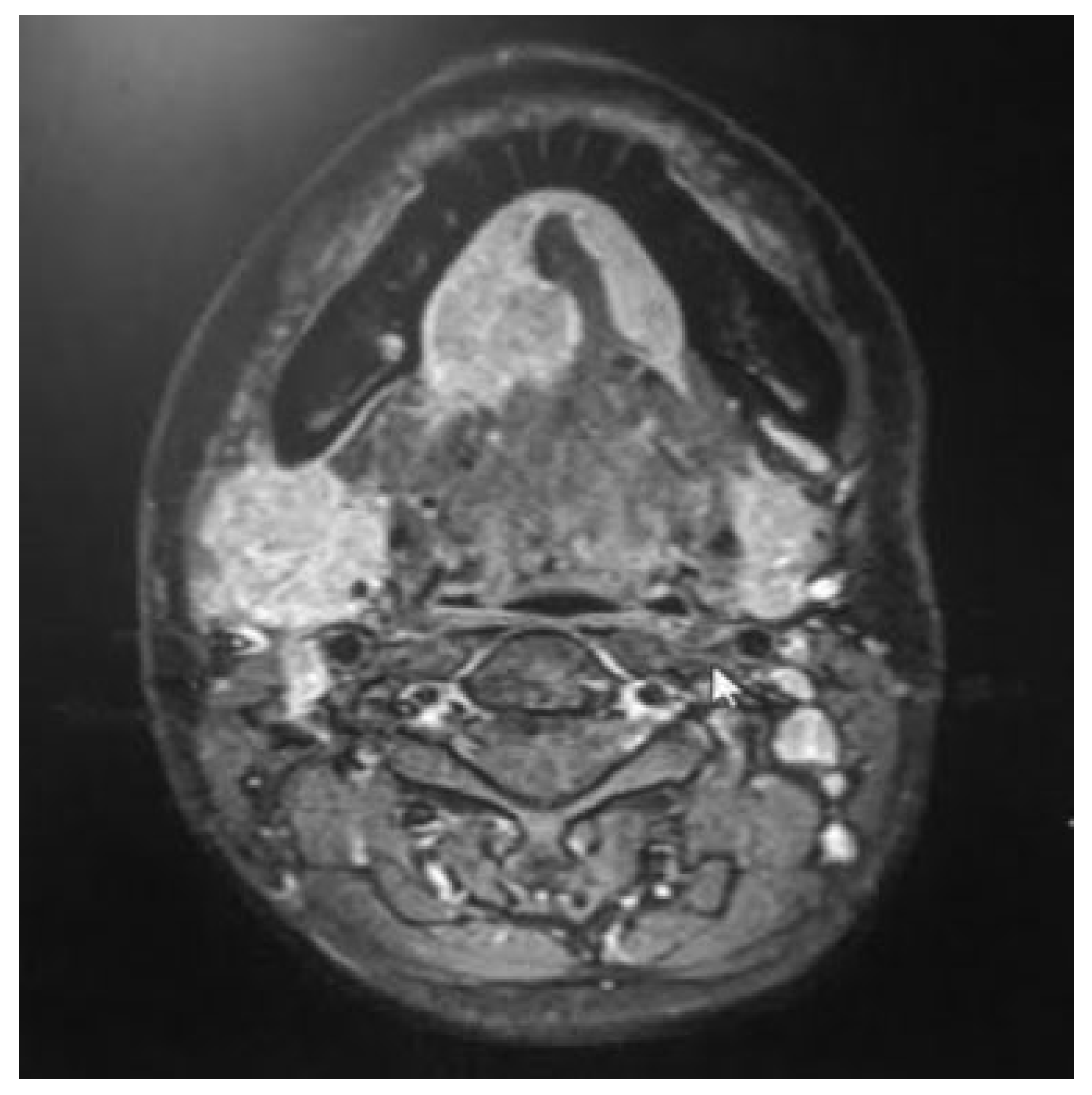
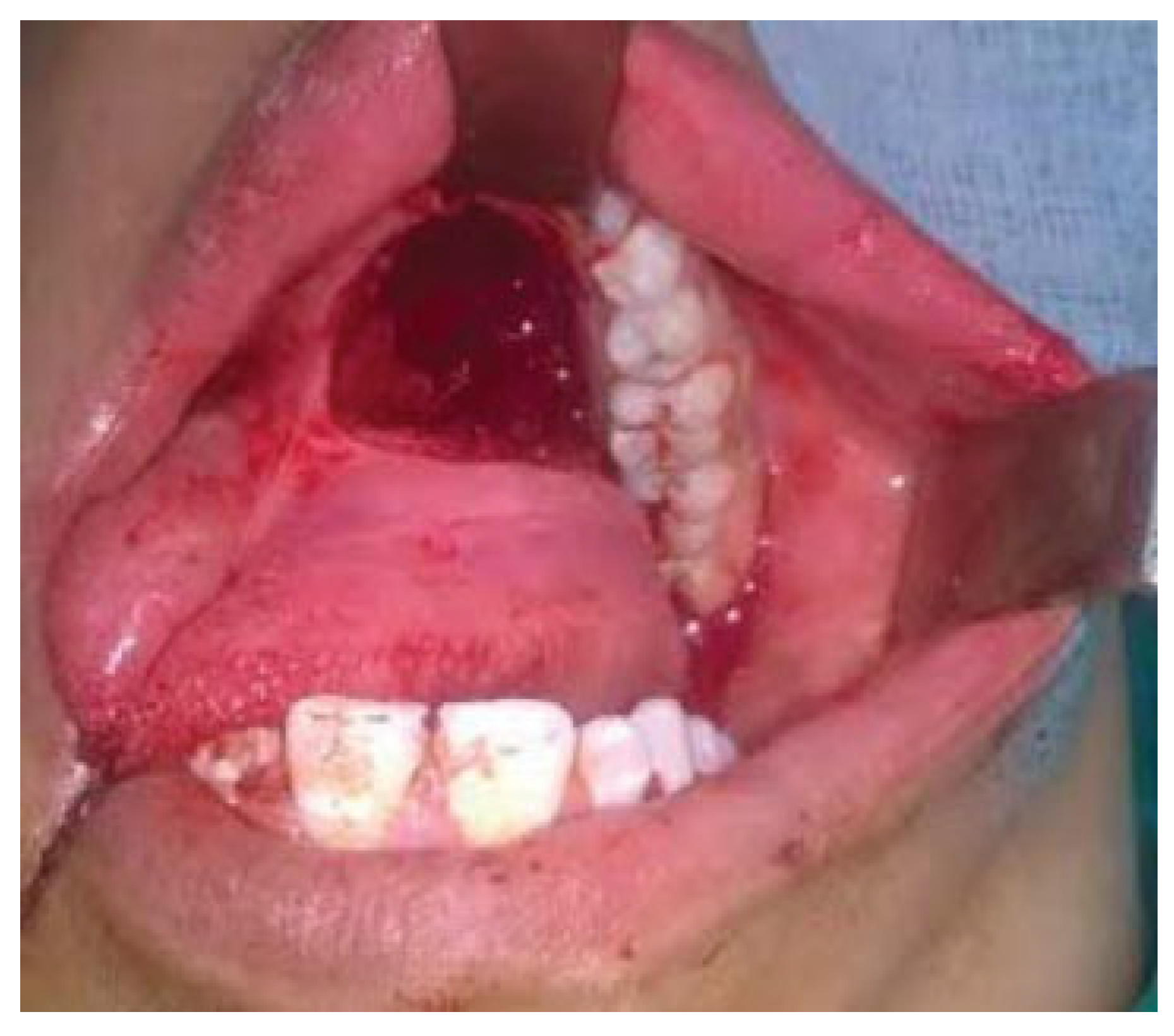
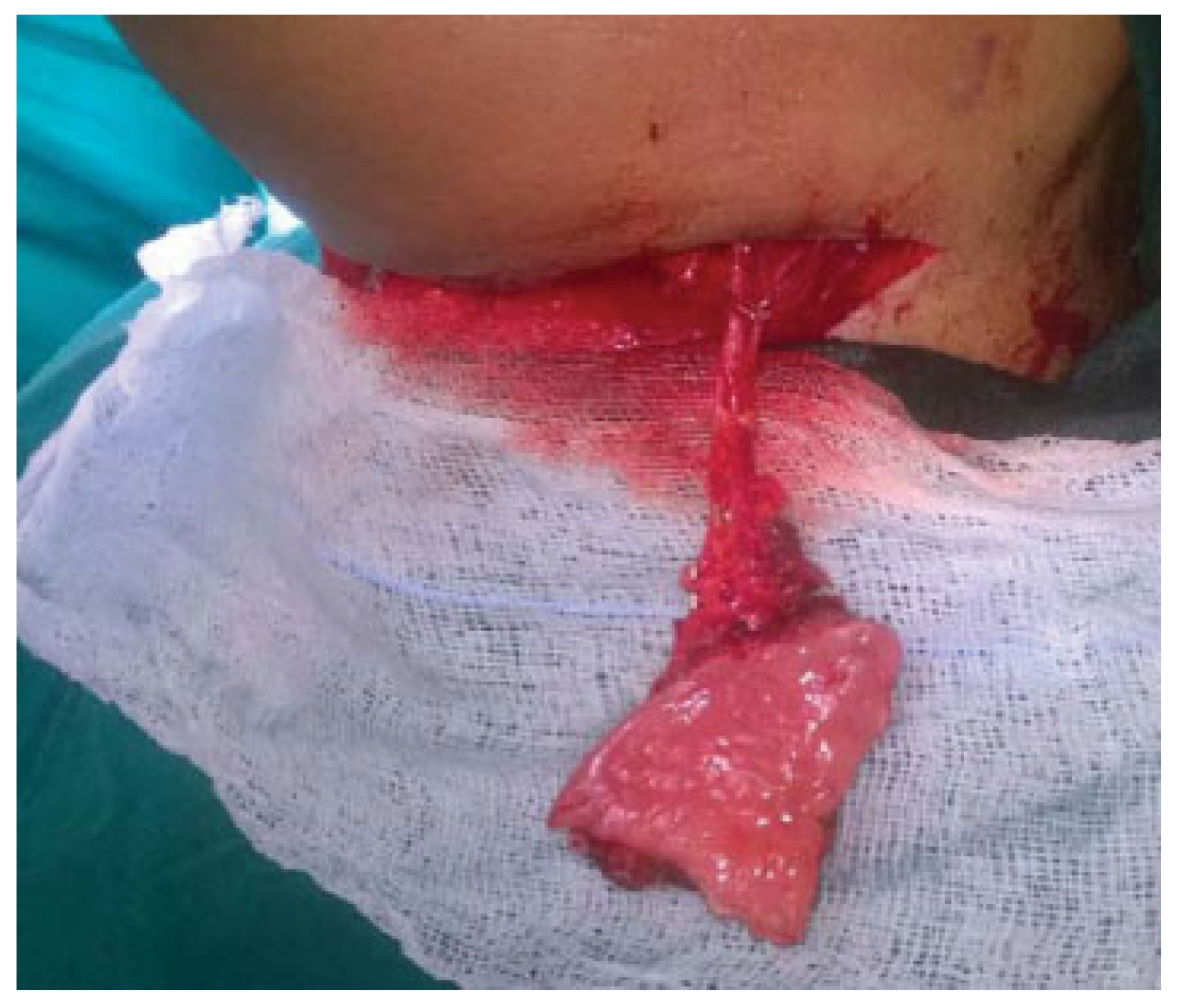
© 2017 by the author. The Author(s) 2017.
Share and Cite
Shivanand, N.B.; Mohan, M.T.; Joseph, S.T. Contralateral Islanded Facial Artery Myomucosal Flap for the Reconstruction of Floor of the Mouth Defect. Craniomaxillofac. Trauma Reconstr. 2018, 11, 157-160. https://doi.org/10.1055/s-0037-1604071
Shivanand NB, Mohan MT, Joseph ST. Contralateral Islanded Facial Artery Myomucosal Flap for the Reconstruction of Floor of the Mouth Defect. Craniomaxillofacial Trauma & Reconstruction. 2018; 11(2):157-160. https://doi.org/10.1055/s-0037-1604071
Chicago/Turabian StyleShivanand, Naveen B., Mihir T. Mohan, and Shawn T. Joseph. 2018. "Contralateral Islanded Facial Artery Myomucosal Flap for the Reconstruction of Floor of the Mouth Defect" Craniomaxillofacial Trauma & Reconstruction 11, no. 2: 157-160. https://doi.org/10.1055/s-0037-1604071
APA StyleShivanand, N. B., Mohan, M. T., & Joseph, S. T. (2018). Contralateral Islanded Facial Artery Myomucosal Flap for the Reconstruction of Floor of the Mouth Defect. Craniomaxillofacial Trauma & Reconstruction, 11(2), 157-160. https://doi.org/10.1055/s-0037-1604071


